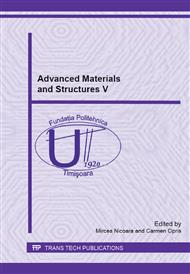p.79
p.85
p.91
p.97
p.103
p.110
p.116
p.122
p.128
Computation of HAZ Hardness for Low Alloyed Welded Steels Using Five-Parameter Logistic Function
Abstract:
The mechanical properties of the welded structures are directly related to the weldability of the steels, thus the estimation of the microstructural constituents in the weld and maximum hardness in the HAZ according to the welding process parameters represent a problem of great interest. The microstructural changes in the HAZ are estimated using a five-parameter logistic function (5PL), which is very accurate in the fitting highly asymmetric data. Also, the same 5PL function can be used in order to predict hardness and toughness in the HAZ based on the heat flow, cooling rates between 800-500 oC and chemical composition of the material. A discussion about the parameters of the 5PL function and fitting experimental data is presented and a studied case for welding S355J2 steel plates is also analyzed.
Info:
Periodical:
Pages:
103-109
Citation:
Online since:
August 2014
Authors:
Keywords:
Price:
Сopyright:
© 2014 Trans Tech Publications Ltd. All Rights Reserved
Share:
Citation:


